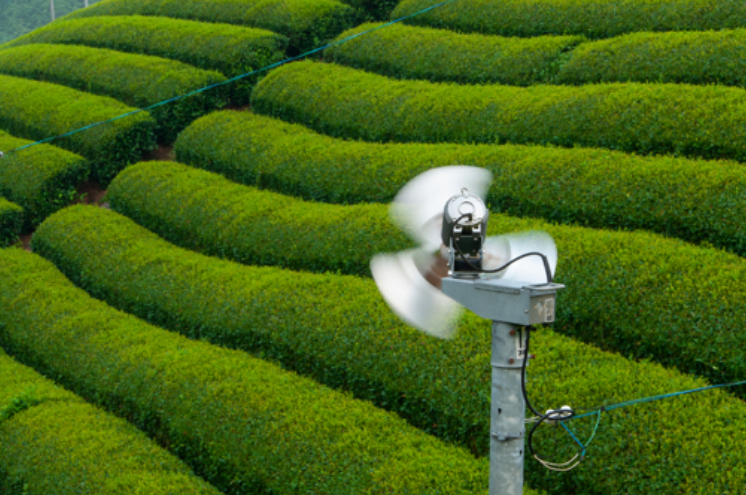Best Practices for Using Stationary Frost Prevention Fans in Crops

The Role of Stationary and Mobile Frost Fans in Agriculture
July 15, 2024
Portable Frost Protection: Best Practices for Using Mobile Frost Prevention Fans in Crops
July 31, 2024Stationary frost prevention fans are indispensable tools in agriculture, especially in regions prone to sudden temperature drops and frost events. These fans play a crucial role in protecting crops by mitigating the damaging effects of frost and ensuring optimal growing conditions.
This article explores best practices for using stationary frost prevention fans effectively, offering tips and guidelines to maximize their efficiency in crop protection.
Understanding the Role of Stationary Frost Prevention Fans
Stationary frost prevention fans are designed to prevent frost damage by circulating warmer air from higher atmospheric layers down to the crop level. This process helps to raise temperatures around sensitive plants, reducing the likelihood of frost formation on leaves and buds. Effective deployment of these fans can significantly minimise crop losses and ensure consistent yields, making them essential investments for farmers in frost-prone regions.
Best Practices for Using Stationary Frost Prevention Fans
1. Strategic Placement
Proper placement of stationary fans is critical for maximising their effectiveness and protecting your crops:
– Elevation
Install fans at a height that allows them to capture warmer air from above the inversion layer where cold air settles.
– Coverage Area
Position fans strategically to cover the entire crop area uniformly. Consider the layout of your fields and the direction of prevailing winds for optimal air circulation.
2. Fan Configuration and Orientation
It is crucial to optimise the configuration and orientation of stationary fans for efficient air movement:
– The angle of Installation
Angle the fan slightly downwards to direct warmer air towards the ground level where crops are situated.
– Spacing
Maintain appropriate spacing between fans to ensure adequate coverage without overlapping air currents excessively.
3. Timing of Operation
Timing is crucial when operating stationary frost prevention fans:
– Activation Threshold
Monitor weather forecasts closely and activate fans when temperatures approach frost levels, typically around 0°C (32°F).
– Duration
Keep fans running until temperatures rise above frost risk levels consistently. Automatic timers or weather monitoring systems can help streamline this process.
4. Maintenance and Monitoring
Regular maintenance ensures that stationary fans operate effectively throughout the frost season:
– Clean Air Intakes
Clear debris and dirt from fan intake vents to maintain optimal airflow and prevent mechanical issues.
– Inspect Electrical Components
Check wiring, motors, and control systems regularly to detect any signs of wear or malfunction early.
5. Integration with Other Frost Protection Methods
It is a good idea to combine stationary fans with other frost protection measures for comprehensive crop safety:
– Heating Systems
Use supplementary heating methods like propane or electric heaters in conjunction with fans during severe frost events.
– Irrigation
Employ sprinkler systems to create a protective ice barrier around plants, leveraging latent heat release to protect against frost damage.
6. Adaptation to Local Conditions
Tailor fan operation and placement to local climate and crop characteristics:
– Crop Sensitivity
Consider the specific frost sensitivity of your crops and adjust fan operation accordingly.
– Microclimate Factors
Account for microclimate variations within your fields, such as low-lying areas prone to colder temperatures.
Proudly South African, Orchard Fans are locally designed and manufactured with extensive experience in the agricultural sector. These fans pull warmer air from the inversion layer and replace colder ground air, thereby flattening the temperature gradient and preventing frost formation. They are designed with a slight angle to push the warmer air toward the ground and can rotate 360° on their own axis, ensuring a wider area of protection. Orchard Fans typically achieve circular coverage between 5.5 to 7 hectares in most cases.




